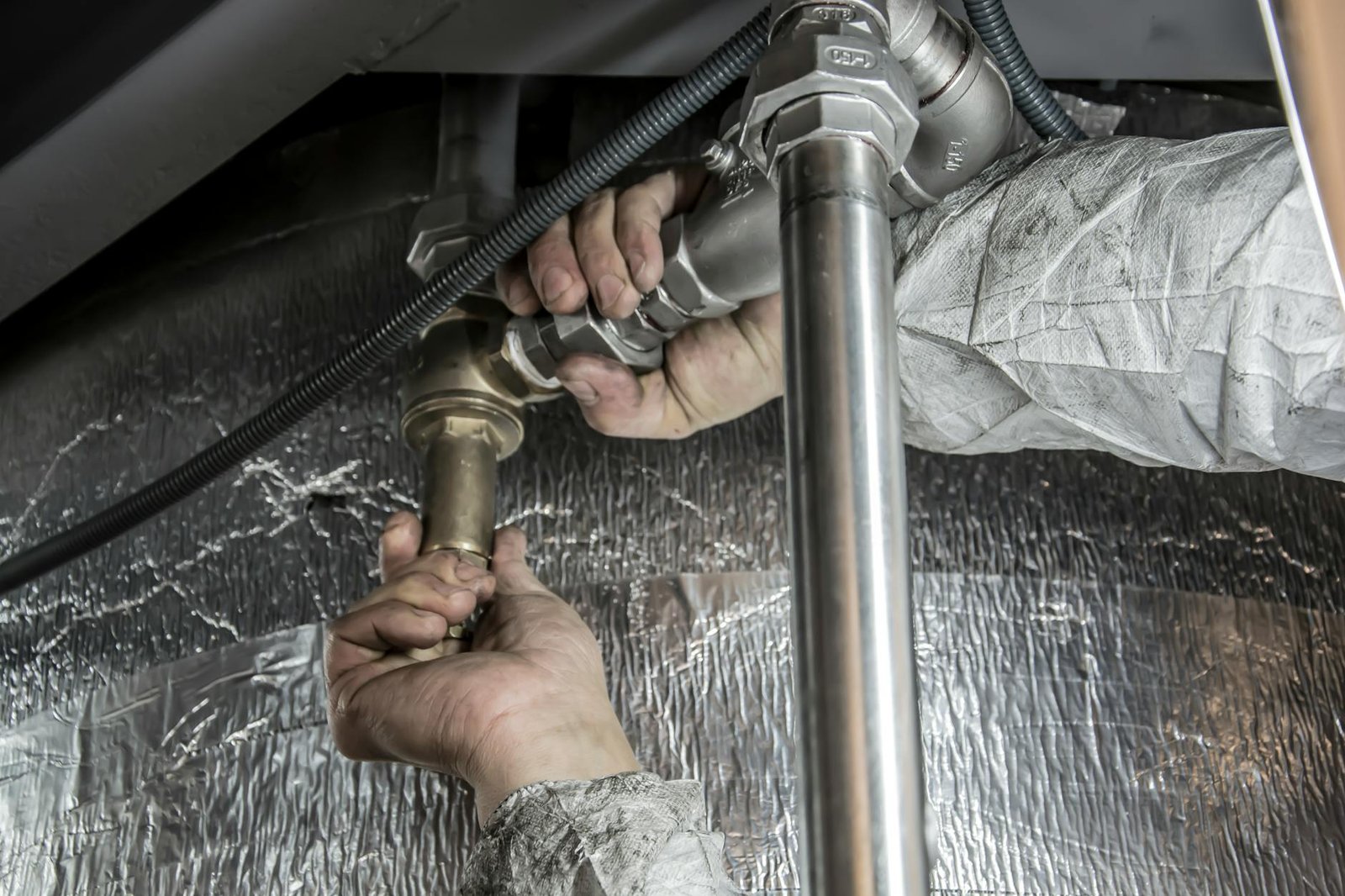
Plumbing Work Safety: Hazards and Control Measures
1. Introduction
Plumbing work is essential across construction, oil & gas, and manufacturing industries, involving installation, maintenance, and repair of piping systems. While crucial for operations, plumbing tasks expose workers to various hazards including chemical exposures, confined space risks, and musculoskeletal injuries. This guide examines key plumbing hazards and provides practical control measures to enhance workplace safety.
2. Common Plumbing Activities
- Pipe cutting, threading, and welding
- Installation of water supply and drainage systems
- Repair and maintenance of plumbing fixtures
- Working with pressurized systems
- Handling sewage and wastewater systems
- Installing gas piping networks
- Working in confined spaces (manholes, tanks)
3. Hazards in Plumbing Work
A. Physical Hazards
- Cuts and lacerations from sharp pipes/tools
- Burns from hot pipes/soldering
- Noise exposure from power tools
- Slips, trips, and falls in wet areas
- Struck-by injuries from falling materials
B. Chemical Hazards
- Lead exposure when working with old pipes
- Solvent fumes from adhesives/cleaners
- Asbestos fibers in old pipe insulation
- Welding/soldering fumes
- Disinfectant chemicals in water treatment
C. Biological Hazards
- Sewage pathogens (E. coli, hepatitis)
- Legionella bacteria in water systems
- Mold exposure in damp areas
- Rodent/insect-borne diseases
D. Ergonomic Hazards
- Repetitive strain injuries from tool use
- Awkward postures in tight spaces
- Heavy lifting of pipes/fixtures
- Vibration injuries from power tools
E. Environmental Hazards
- Working at heights (ladders, scaffolds)
- Confined space risks (manholes, tanks)
- Extreme temperatures (boiler rooms, outdoors)
- Electrical hazards near water sources
4. Control Measures for Plumbing Hazards
A. Engineering Controls
- Local exhaust ventilation for soldering/welding
- Pipe cutting machines with guards
- Pressurized air testing instead of water where possible
- Mechanical lifting aids for heavy pipes
B. Administrative Controls
- Job rotation to limit chemical exposure
- Confined space entry permits
- Lockout/Tagout (LOTO) for pressurized systems
- Regular equipment maintenance schedules
C. Personal Protective Equipment (PPE)
- Cut-resistant gloves for pipe handling
- Safety goggles/face shields for cutting
- Respirators for chemical/biological hazards
- Waterproof boots for wet environments
- Hearing protection for noisy tools
D. Safe Work Practices
- Proper pipe support during installation
- Wet methods to control dust when cutting
- Decontamination procedures after sewage work
- Toolbox talks before hazardous tasks
- Buddy system in confined spaces
5. Industry-Specific Considerations
A. Construction Sector
- Challenge: Coordinating with multiple trades
- Solution: Clear work area demarcation
- Special Risk: Fall hazards during rough-in phase
B. Oil & Gas Industry
- Challenge: Flammable gas line installation
- Solution: Hot work permits and gas detection
- Special Risk: Hydrogen sulfide in process piping
C. Manufacturing Facilities
- Challenge: Working around production equipment
- Solution: Coordinated shutdown procedures
- Special Risk: Chemical line contamination
6. FAQs
FAQ 1: What PPE is required for soldering copper pipes?
Answer:
- Heat-resistant gloves
- Safety glasses with side shields
- Respirator with organic vapor cartridge
- Long-sleeved clothing
- Local exhaust ventilation recommended
FAQ 2: How to safely cut cast iron pipes?
Answer:
- Use snap cutters instead of saws when possible
- Wear N95 mask for dust protection
- Wet the cutting area to suppress dust
- Secure the pipe properly before cutting
FAQ 3: What are the hazards of working with old lead pipes?
Answer:
- Lead poisoning risk from dust/fumes
- Requires HEPA vacuum cleanup
- Special disposal as hazardous waste
- Blood lead monitoring for workers
FAQ 4: How to test for gas leaks safely?
Answer:
- Use approved gas detectors (not flame)
- Soap solution for visible bubble test
- Never use open flame
- Evacuate and ventilate if leak detected
FAQ 5: What precautions for sewage line repairs?
Answer:
- Waterproof gloves and boots
- Face shield for splash protection
- Immediate shower facilities available
- Hepatitis B vaccination recommended
FAQ 6: How to prevent frozen pipes in winter work?
Answer:
- Insulate exposed piping
- Maintain adequate heat in work areas
- Drain systems when not in use
- Use approved heat tapes
FAQ 7: What are the electrical hazards in plumbing?
Answer:
- Electrocution risk when working near water
- Damaged tool cords in wet areas
- Contact with hidden wiring
- GFCI protection required for all tools
FAQ 8: How to safely work in plumbing chases?
Answer:
- Test for oxygen deficiency first
- Ensure proper access/egress
- Use fall protection if >4 feet deep
- Communication system with attendant
FAQ 9: What are the risks of PVC cement?
Answer:
- Highly flammable vapors
- CNS depression from inhalation
- Skin irritation/defatting
- Requires adequate ventilation
FAQ 10: How to handle plumbing in healthcare facilities?
Answer:
- Special precautions for Legionella control
- Backflow prevention critical
- Coordinate with infection control
- Emergency water shutdown plans
7. Conclusion
Plumbing safety requires:
✔ Hazard-specific PPE selection
✔ Proper chemical handling procedures
✔ Confined space protocols
✔ Ergonomic work practices
✔ Regular safety training
By implementing these measures across industries, organizations can protect plumbers from occupational hazards while maintaining efficient operations. Continuous monitoring and improvement of safety practices ensures long-term protection for plumbing professionals.
Formwork Safety: Hazards and Control Measures
Painting Work Safety: Hazards and Control Measures
Demolition Safety: Hazards and Control Measures
Chemical Safety & Hazard Communication (GHS, SDS)
Manufacturing Safety: Machine Guarding & Lockout-Tagout (LOTO)